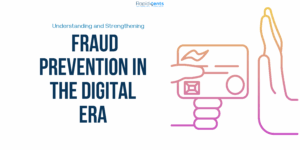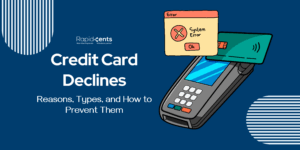Chargebacks aren’t just annoying. They’re expensive.
Every dispute doesn’t just reverse a sale; it adds fees, operational costs, and a hit to your merchant reputation. And here’s the real kicker: many companies lose money because of myths they come to believe about chargebacks.
These misunderstandings result in poor decisions, weak prevention strategies, and lost chances to fight back. The biggest myths, however, are not only false; they’re dangerous to your revenue and your bottom line.
What Are Chargebacks?
A chargeback occurs when a bank challenges a transaction on a customer’s behalf. The bank investigates, and if it sides with the customer, the funds are pulled from the merchant’s account.
Why they’re there: They safeguard consumers from fraud and unauthorized charges.
Why they’re painful for merchants: Fees, lost product, operational pain, and increased chargeback ratios that can mean higher processing fees, or even having your merchant account terminated.
Myth #1: “Chargebacks Are Always the Customer’s Fault”
The Myth:
Chargebacks happen because customers are being dishonest or impatient.
The Truth:
Not always. Yes, there’s friendly fraud (customers’ abuse of the system), but a lot of chargebacks could be avoidable on the merchant’s side:
- Confusing checkout experiences.
- Poor communication about shipping delays.
- Refund policies hidden in the fine print.
When you assume customers are the problem, you miss opportunities to fix your processes, like clear billing descriptors, proactive customer service, and transparent return policies.
Myth #2: “Winning Chargeback Disputes Is Impossible”
The Myth:
Once you get hit by a chargeback, you cannot win.
The Truth:
Winning is absolutely possible, but only if you’re prepared. Chargeback representment (fighting the dispute) works when you have evidence:
- Proof of delivery.
- Signed receipts or digital logs.
- Clear terms and conditions are accepted at checkout.
Merchants lose by default when they don’t respond or submit weak documentation. With the right process and tools that automate it, your odds of recovery rise dramatically.
Myth #3: “Chargebacks Are Just the Cost of Doing Business”
The Myth:
They’re inevitable. You should just include them in your expenses.
The Truth:
Treating chargebacks as unavoidable is like leaving your store unlocked at night. You’re inviting losses.
- Chargeback fees range from $20 to $100 per dispute.
- High chargeback ratios can lead to higher processing rates or even getting blacklisted by payment networks.
- It’s not just the cost of the dispute; it’s lost revenue, lost product, and lost consumer trust.
Prevention is far cheaper than accepting the losses as a part of doing business.
Myth #4: “Refunds and Chargebacks Are the Same Thing”
The Myth:
A chargeback is just another type of refund, right?
The Truth:
Not even close.
- Refunds are voluntary: You return funds to the customer yourself.
- Chargebacks are forced: The bank pulls funds from your account, adds fees, and counts against your chargeback ratio.
Confusing the two leads merchants to resist offering refunds, which ironically increases the chance of a chargeback later. Proactive refunds can prevent disputes and protect your merchant account.
Myth #5: “Chargeback Protection Services Aren’t Worth It”
The Myth:
Why pay for chargeback tools? Handling disputes manually is cheaper.
The Truth:
Manual handling can make sense if you have one dispute a month. But as volume increases, chargebacks become a tax on your team and your revenue.
- Today’s chargeback prevention tools intervene to prevent fraud from occurring in the first place.
- Automated representment tools argue disputes for you and with better win rates than many manual teams.
- The ROI? Prevention is nearly always cheaper than repeated disputes.
How These Myths Affect Your Bottom Line
Every one of the above myths results in unnecessary losses:
- Direct costs: Costs to fight the claim, lost income, and fines.
- Indirect costs: Lost employee time, lost operational effectiveness, and lost reputation.
- Long-term costs: Higher processing fees or even termination of your merchant account.
If you’re hanging onto old ideas about chargebacks, you’re not just losing one sale; you’re losing the future of your entire payment processing business.
The Truth: What Smart Businesses Do About Chargebacks
Top merchants do not wait for disputes to pile up. They create systems to prevent and address them:
- Transparent policies and active communication with customers.
- Fraud detection tools and chargeback alerts.
- Strong documentation and automated representment processes.
- Working with payment processors (such as RapidCents) that include chargeback protection.
Chargebacks aren’t inevitable, and they’re definitely not unbeatable.
Conclusion: Stop Believing the Myths, Start Protecting Your Business
Chargebacks are more than financial loss — they result in stalled growth, erosion of customer trust, and instability. The myths above are what keep businesses trapped in reactive mode. The truth? When you have the right tools and are in the right mindset, you can stop disputes at the door, recapture lost revenue, and help protect your bottom line.
Ready to see how RapidCents helps businesses like yours decrease chargebacks?
Book a demo




